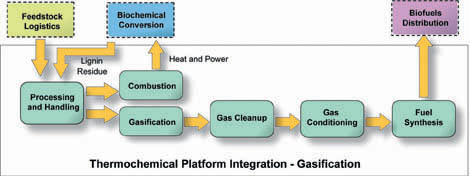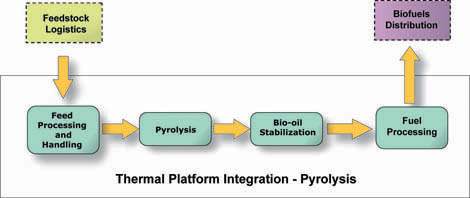|
Thermochemical Conversion
www.ThermochemicalConversion.com
|
Thermochemical Conversion
Business Development * Engineering
* Online
Advertising * Sales * Strategic
Marketing
|
Ad space available from the Renewable Energy Institute. For ad rates, send email to:
info@ThermochemicalConversion.com
Does your company need;
New clients
Increased revenues
Greater market share
New business opportunities
Durable Competitive Advantage ?
Will your
customers and prospective customers find your company
---- or ----
one of your company's competitors at: www.ThermochemicalConversion.com
?
"The" www.ThermochemicalConversion.com
website is the quickest, most effective advertising, business
development and marketing strategy for reaching new clients and
increasing sales.
There's only
one:
www.ThermochemicalConversion.com
Website!

Business Development,
Engineering, Online Advertising, Sales and Strategic Marketing Solutions
Renewable Energy Institute
"Changing the Way the
World Makes and Uses Energy"

info@ThermochemicalConversion.com
_____________________________________________________
“spending
hundreds and hundreds and hundreds of billions of dollars every year for
oil, much of it from the Middle East, is just about the single stupidest
thing that modern society could possibly do. It’s very difficult to think of anything
more idiotic than that.”
- R. James
Woolsey, Jr., former Director of the CIA

info@ThermochemicalConversion.com
|
Thermochemical Conversion
www.ThermochemicalConversion.com
What is Thermochemical Conversion?
Thermochemical
Conversion
is the process of converting biomass into one or more renewable fuels (biofuel
or bioenergy), whereby the biomass is either; cracked, depolymerized, or
gasified in order to produce transportation fuels such as synthetic diesel,
Fischer-Tropsch diesel, or "green" gasoline. These Thermochemical
Conversion
technologies are separately referred to as:
-
Fast
Pyrolysis
-
Gasification
-
Slow
Pyrolysis
-
Torrefaction
Thermochemical
Conversion Processes
Gasification
In a gasification
conversion process, lignocellulosic feedstocks such as wood and forest
products are broken down to synthesis gas, primarily carbon monoxide and
hydrogen, using heat. The biomass feedstock is then partially oxidized, or reformed with
a gasifying agent (air, oxygen, or steam), which produces synthesis gas
(syngas).
The
quality and contents or makeup of the synthesis gas
will vary due to the different types of biomass (feedstock), the
moisture content, the type of gasifier used, the gasification agent, and the
temperature and pressure in the gasifier.

The synthesis gas
produced undergoes clean-up and conditioning to create a contaminant-free
gas having the appropriate hydrogen-carbon monoxide ratio prior to the catalytic
conversion step.
Among the
contaminants removed during clean-up are tars, acid gas, ammonia, alkali metals,
and other particulates.
synthesis gas
is
then conditioned: hydrogen sulfide levels are reduced by sulfur polishing, and
hydrogen-carbon monoxide ratio is adjusted using water-gas shift.
Pyrolysis
In
pyrolysis processing, one or more biomass feedstock(s) are broken down using heat in the
absence of oxygen, producing a bio-oil that can be further refined to a
hydrocarbon product. The decomposition occurs at lower temperatures than
gasification processes, and produces liquid oil instead of a synthesis gas.
Oil
produced varies in oxygen content or viscosity according to the feedstock used.

Bio-Oil
Cleanup
Oil
produced via the pyrolysis process must have particulates and ash removed in
filtration to create a homogenous product. The oil is then upgraded to
hydrocarbon fuels via hydrotreating and hydrocracking processing, which reduces
its total oxygen content.
____________________________________________________

____________________________________________________
What
is Advanced Gasification?
In
the biomass gasification
sector, there are a large number of companies that offer a wide range of biomass
gasification technologies. Some of these biomass gasification
technologies are very old and highly inefficient at converting
biomass to synthesis gas, in the waste
to energy or waste to fuel equation. Some of these are operating as low as 27%
efficiency. As a result, a large percentage of biomass is "wasted" and
the
Advanced
gasification seeks
to increase the use of biomass gasification
installations, which demonstrate improved biomass to synthesis
gas efficiencies, that in turn, increases the return on investment resulting
in more biomass gasification
plants.
Advanced
gasification technologies
ultimately reduces plant capital and operational costs through increases in biomass gasification
technologies.
What
is "Plasma Gasification?"
Plasma
Gasification - is the thermal disintegration of carbonaceous materials into
their elemental compounds in an oxygen-starved environment using a
"plasma."
Plasma
Gasification renders most waste streams, including medical/hospital waste,
chemical waste, hazardous waste, and even low-level radioactive waste,
completely safe and inert. Plasma
Gasification is the "ultimate" solution for handling most every waste
stream that is now going into landfills. In fact, Plasma
Gasification plants
will soon be built next to landfills, and take the waste that would have gone
into the landfill, and be processed by Plasma
Gasification. Eventually,
the waste and contents of landfills will be recovered and processed with Plasma
Gasification plants.


Email:
info(@)Renewable Energy Institute (.)org
The information contained on this site is
copyright protected and
cannot be
reproduced in any form or manner without our consent.
Thermochemical Conversion
www.ThermochemicalConversion.com
Thermochemical
Conversion

info@ThermochemicalConversion.com
Renewable
Energy Institute
Copyright
© 2008
All Rights Reserved



